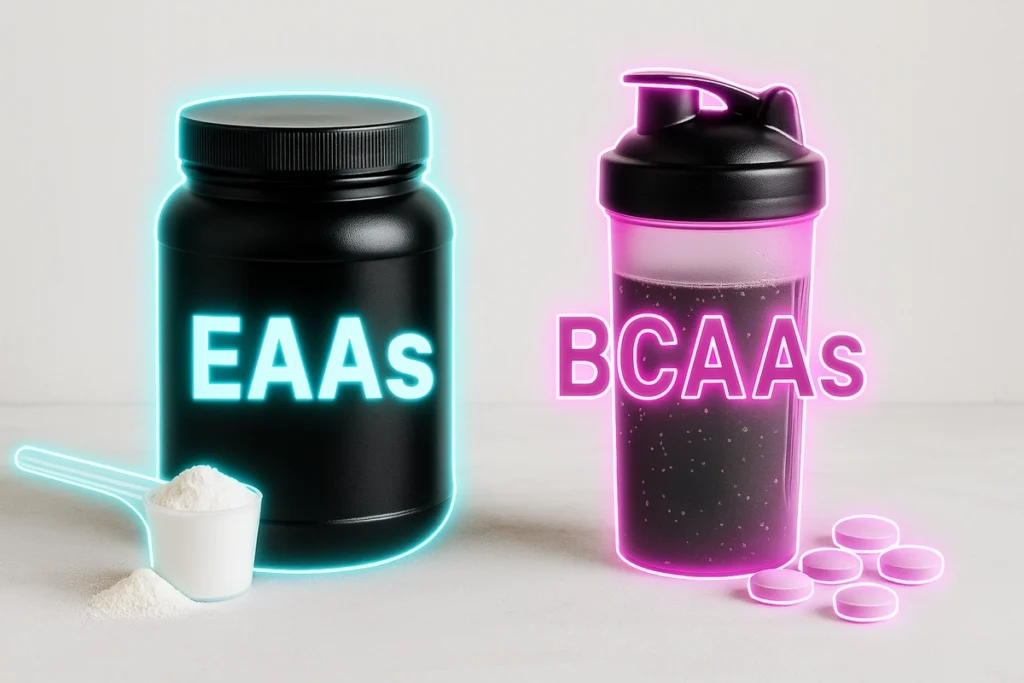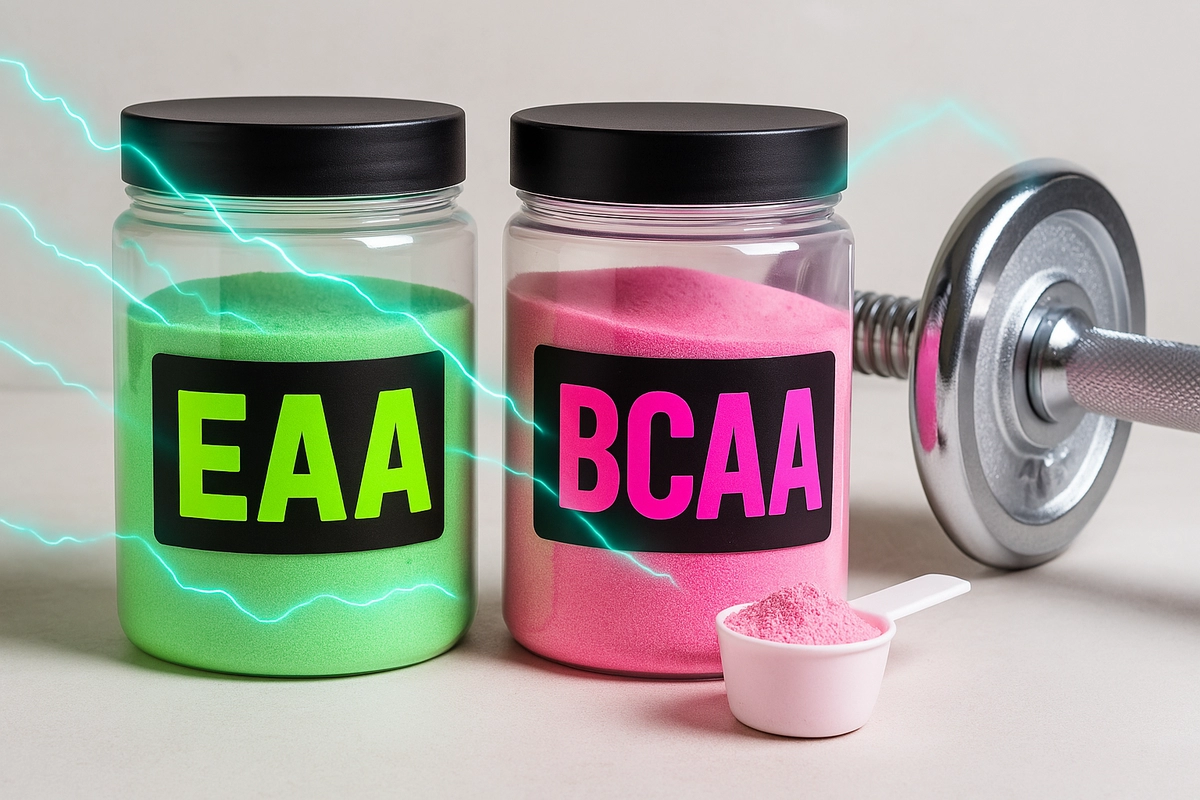Let’s cut to the chase: EAAs outperform BCAAs when it comes to muscle growth, recovery, and workout performance.
Why? Because EAAs give your body all 9 essential aminos needed for muscle protein synthesis, while BCAAs only offer 3.
I learned this the hard way over years of training and coaching. Once I made the switch myself and saw how my clients responded, I stopped recommending BCAAs as the go-to.
Table of contents
What Are BCAAs?

BCAAs include three amino acids: Leucine, Isoleucine, and Valine. These are often hyped for their role in promoting muscle protein synthesis and reducing post-workout soreness.
They were super popular about 5–10 years ago, and like many lifters, I jumped on the trend. But here’s the deal: BCAAs alone can’t do much unless the rest of the essential aminos are present.
Think of it like trying to cook a full meal with only three ingredients. Good start, but not enough.
What Are EAAs?

EAAs, on the other hand, provide all 9 essential amino acids your body needs to build and repair muscle. That includes the 3 BCAAs, but also the other 6 that are crucial to complete the muscle-building process.
If your diet is low in protein, or you’re training fasted or cutting, EAAs become even more valuable.
When I switched to EAAs a few years ago, especially during fasted workouts, the difference was immediate: better recovery, less soreness, and more consistent energy throughout the session.
EAAs vs BCAAs – Key Differences That Matter

Here’s where the real gap shows up:
- Muscle Protein Synthesis: EAAs stimulate it far more effectively than BCAAs alone.
- Muscle Preservation: EAAs help prevent muscle loss during calorie deficit.
- Workout Energy: Many clients feel better intra-workout focus and endurance using EAAs.
- Recovery: Quicker bounce-back between sessions, especially for people training 4+ times/week.
Take my client Lucas, for example. He was doing fasted morning workouts with BCAAs but always felt wiped out. We switched him to EAAs, and within a week, he messaged me, “Bro, this stuff is magic.” Energy went up. Soreness went down.
What the Science Really Says

Scientific studies back this up. One notable research paper found that EAAs stimulate muscle protein synthesis about twice as much as BCAAs alone. (Source 1, Source 2)
Why? Because your body can’t build new muscle with just three amino acids. You need the full set. It’s like trying to build a house with only bricks but no cement or wood.
My Coaching Experience with Clients (Real Talk)

Over the last 6+ years of coaching, I’ve helped hundreds of clients dial in their training, nutrition, and supplements. When it comes to BCAAs vs EAAs, here’s what I’ve seen:
- Anita, a fitness model, used BCAAs effectively during a photoshoot prep only because her protein intake was already dialed in.
- Dario, a 40-year-old client, went from 3 workouts per week to 5 after switching to EAAs. He recovered faster and could push harder.
That kind of improvement isn’t just science—it’s what consistency feels like.
Best Time to Take EAAs or BCAAs for Workout Results

Here’s what I personally recommend:
- EAAs: During your workout (especially in a fasted state), or right after training.
- BCAAs: Only if you’re already getting enough protein and want something light during your session.
If you’re wondering when to take your EAAs for the best results, check out this guide on the best time to take EAAs.
Bonus: I like citrus or watermelon flavors. Cold water, mixed with a scoop of creatine? Perfect intra-workout drink.
Final Verdict – Which One Should You Use?

If you want better results, go with EAAs. They’re more complete, more effective, and worth the slightly higher price.
Would I still recommend BCAAs? Maybe, if you’re on a tight budget or already eating 150g+ of protein per day. But in most cases, EAAs are the smarter choice.
At the end of the day, it’s not about the hype. It’s about what works—and I’ve seen EAAs deliver time and time again.
Train smart. Recover smarter.



Leave a Reply